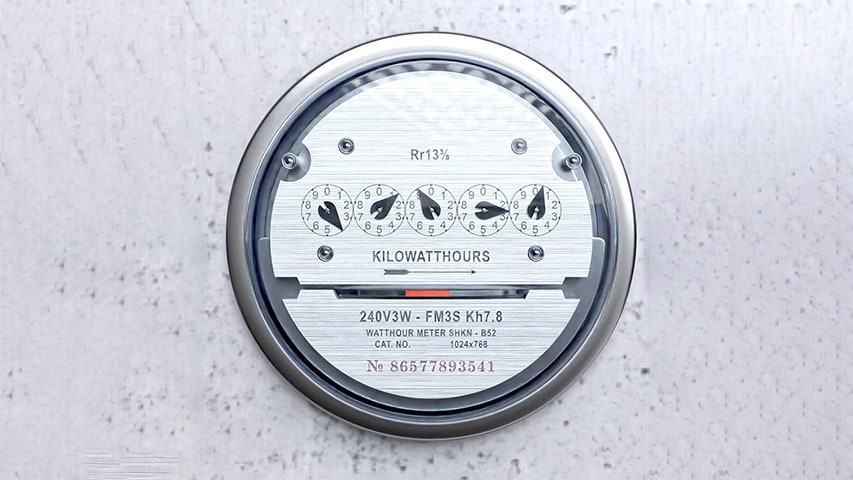
You may ask yourself: How much does a rigid inflatable boat cost? Well it all depends on what your purpose is.
Table of Contents
Introduction
Rigid inflatable boats have become, over the last couple of years, the preferred choice not only for marine professionals but also for those that take boating as a leisure activity. There are a plethora of reasons for this; the boat comes with a myriad of benefits.
For many years now I own a single outboard RIB. As a journalist I sailed many motor boats and RIBs. I aways had the most fun in RIBs. The feeling of “flying” over the waves is really extraordinary! It’s a kick I can’t get enough of.
That being said, one cannot help but inquire why these Rigid Inflatable boats, ostensibly referred to by their abbreviation “RIBs” or “RHIBs”, as expensive. They cost more than the “ordinary” boat, but why exactly is that. The answer to this question can be found in the nuances of the RIBs, from the construction to their operations.
1. Rigid Inflatable Boat’s History
Rigid Inflatable boats are fairly nascent. It is their unique design, one that gives them their idiosyncratic toughness and versatility. The boat was originally designed at the Atlantic College in Wales to create a high-functioning boat with a wide range of functionality. This aim was without a doubt attained.
Even military organizations such as the US Navy, Coast Guard, Special Forces, customs … have adopted RIBs as their preferred, heavy duty boats.
2. Why So Expensive?
The main reason why the RIBs are so expensive is their numerous advantages over “ordinary” boats. Even without prior knowledge, you can tell at first sight that these boats are something special.
Here are some of the reasons why RIBs are more expensive than ordinary boats.
3. Design and Manufacture of a RIB
Before a serious and professinoal shipyard start building RIBs, some very imported design stages must have been successfully completed.
Naval architects use the CFD equation based simulations. A vital tool to deliver solid, professional and decent RIBs. I wrote a short article on this stage in the building proces.
RIBs have a solid base akin to that of ordinary boats. The floors of the boats are built with an expensive and solid hull form. The inflatable part of the boat is the tubing. All the parts and materials that are used in the manufacturing of the boat are costly.
What’s more, many RIB manufacturers employ a wide range of polyester fibers and PVC coatings on the outside of the boat. Though it is expensive, it makes the boat very resistant to wary from sunlight and other chemicals. It makes the tubing more resistant to puncture and increase their ability to be inflated to very high pressures.
You should also note that the production of RIBs is expensive and require a lot of labor. The manufacturers, therefore, control the environment during manufacture. There can be no dust or any dirt in the area since they can cause the “welds” to be weakened, resulting in a defective product. RIBs also comes with luxury features such as seats that unfold into a sun lounge and cabin with a berth, which also adds to their cost.
Since some years we see very luxurious, big RIBs on the market.
4. Aluminum vs. Composite Hulls
Modern-day boats have an aluminum hull, while RIBs uses most of the time composite materials when creating their hulls. As mentioned earlier, RIBs have a strong, solid base, and it is because they are built using composite material or aluminium.
The major advantage of using aluminium is that it is lightweight compared to steel but with almost identical strength and stiffness at the same thickness. The welding must be done very precise and is a skill that takes time to master.
The principle behind composite building material is very simple. A binding medium stiffens, and in doing so, makes stronger a fibrous material. In a lot of ways, it is akin to binding steel and concrete together, thus making a very strong house. The summation is way stronger than the parts.
The composite material that is used in RIBs uses resin as the medium. The stiffening fibers are spun graphite, glass, and filaments that are more than ten times thinner than human hair. Individually, these fibers are very strong. However, when held together by resin, they become super tough and cast into any shape.
This is why RIBs are so expensive to manufacture and are generally more expensive than other types of boats.
5. They Are Lightweight
As mentioned earlier, the composite materials and aluminium used in the creation of RIBs’ hulls are very light. Moreover, the boat is made even lighter by the presence of tie inflatable sidings. Without interfering with the boat’s performance and functionality, this lightness increases carrying capacity and fuel efficiency.
It should be noted that there is a safe working load range, as is the case with all other boats. So long as you are within this range, you will not only experience the effectiveness and efficiency of the boat, but you will also be able to carry all that you want without adding a lot of labor to the boat.
6. They Are Very Stable
Combining the inflatable color and the composite or aluminium hard hulls gives RIBs superior stability compared to traditional boats. The buoyancy that the tubes add to the boat makes them virtually unsinkable and thus very stable.
Even when gliding over the water at high speeds, you can be assured that the boat will remain stable. This is very uncommon for lighter boats, but RIBs are the exception to the rule.
Moreover, RIBs are loved by professionals and leisure boat owners alike because they are so seaworthy. Whether they are used for military escapades or to transport passengers, you can be assured that they will be effective. One thing that makes them suitable to transport passengers is the large cabin some come with.
7. They Have a Lot More Power
Rigid Inflatable Boats can support more powerful motors. This is because they were designed for intense ocean conditions and thus have to put in the performance.
As a result of their lightweight construction, they require a lot less horsepower than traditional vessels need to reach the same speed. Thus, you can be assured that when you get a RIB, you will also be getting a boat with effective RPM and one that comes with high speeds and performance.
My advice is that you never overpower your RIB. Stick to what the builder indicates how ever tempting overpowering may be. Insurance wise overpowering might lead to not getting an insurance at all. And boating without insurance is a fool’s recipe for a financial hangover.
8. Fuel Efficiency
Getting RIBs to plane is faster and will require less energy than an ordinary boat. This increases the range of the boat, as you will get more work done with the same amount of fuel.
This is especially important when it comes to passenger-oriented use. You can cut fuel costs and thus increase profits without compromising on the quality of the ride.
I should mention that outboards generally consume more than inboards. And also that diesels consume less.
9. Variety of Use
Unlike other traditional boats, RIBs are ideal in many ways. As aforementioned, the boat was designed mainly for military and naval exploits, such as rescue operations. However, over the years, the RIB has become quite popular with recreational boaters too. RIBs can also be used as a commercial passenger boat since the boat is easily customizable in seating arrangement and sizing.
Additionally, you can count on the dependability of RIBs regardless of the type of water. No matter where you are, you will feel the solidity of the boat at all times. Marine engineers use RIBs for rescue missions in rough ocean conditions, and the same boat can be used for whale watching in the open sea.
This variety also comes at a price but you get a lot of RIB for your money.
10. Safety
When it comes to boats or any mode of transport, nothing is greater than the safety conditions, and RIBs are perhaps the safest boat to have. Even when the RIB is swamped with water it will still float.
The RIB can hold more weight (= persons) than other boats of the same size.
The inflatable collar that surrounds the boat not only protects the boat when maneuvering in tight spaces, like docking but also reduces the impact if a collision happens.
Check out this short video that shows how side impact on RIB’s tubes is performed.
11. Engines
As mentioned, RIBs can take up very powerful motors, and most RIBs do, in fact, have very powerful engines. The price of the engine is obviously factored in when determining the selling price of the boat. The more powerful the engine is, the higher the price of the boat.
That being said, you can be assured that you will be getting the best type of engine and boat in the market and one that will last you for a very long time.
It’s hardly to believe that the powerful outboard cost as much or even more than a car. Take good care of it, I should say.
12. Maintenance Costs
Another reason why RIBs are considered expensive is that they require a lot of care and attention. Take, for example, there are storage costs for the RIBs unless it fits in your garage. It is recommended that, when storing a RIB, you have it covered to prevent direct exposure to sunlight and the elements.
Even though high-quality sun covers are a good investment, they are a bit costly, especially since they are so specific when it comes to RIBs. They should be light grey in color, be breathable, and block ultraviolet rays. Quality covers that fit all these requirements cost between 300 and 1000+ euro (365 and 1220+ dollars) depending on the sizes of your RIB.
13. Mold
The boat can generate mold during the winter period. It can also generate mold if not properly stored. Effective mold removal can be quite expensive. This cost can easily be avoided by maintaining the RIB consistently.
14. Cost of Repairs
As you’d expect, the more expensive it is to manufacture the boat, the more expensive it is to get spare parts for the boat and have them fitted. For example, if the outer layer of the boat is damaged, you will have to make sure that it is repaired correctly and thus incur some costs.
Apart from the hull, the second most important part of the RIB are the tubes. Any damage that affects them will, in turn, affect the buoyancy and maneuverability of the entire boat. Ergo, they need to be repaired immediately.
Some RIB owners choose to retube their precious.
Repairing Rigid Inflatable Boats is really expensive and adds to the costs of maintenance, as well as any add-ons and accessories you want to have installed. Maintain it properly and your RIB will go a long way.
Are Rigid inflatable Boats Worth the Money?
Certainly! It’s essential to ensure the reliability of your purchase by opting for a reputable dealer or a trusted individual within your network.
There is a good reason why the RIBs’ popularity has proliferated over the last decennia. Quality and reliability are not cheap, and you can see the quintessence of this with RIBs.
But man, they’re so cool to own and to operate! You feel really close to the water.
RIBs offer a distinct advantage – while they may come with a higher price tag compared to standard boats, you can rest assured that you’ll embark on exhilarating adventures in a vessel known for its safety features.
It’s crucial to note that the safety of passengers is closely tied to the expertise of the skipper at the helm.



